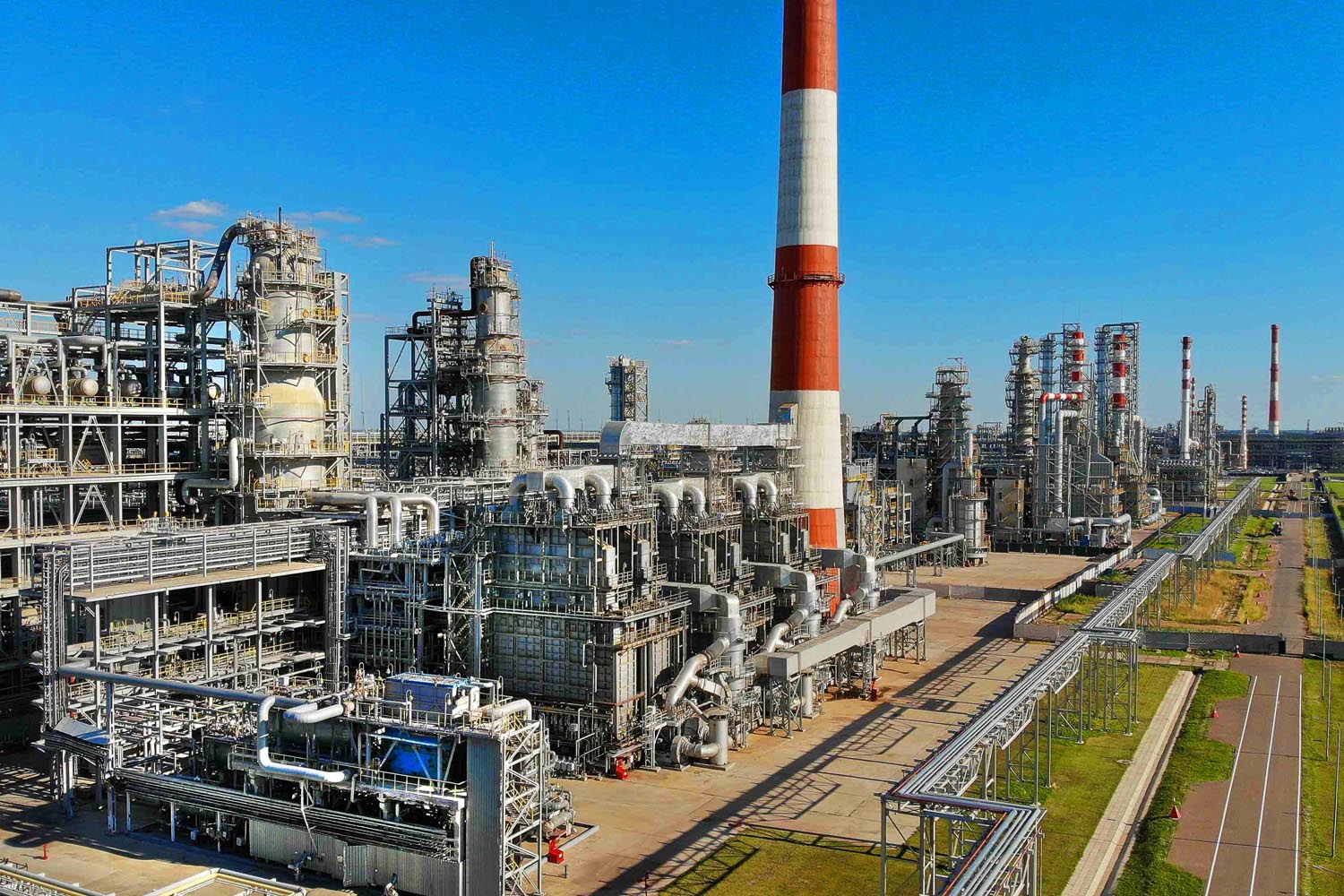Moscow – Like others around the world, Russias lubricant market is shifting toward API Group II and Group III base oils, and a consultant predicts that this will lead to further Group I rationalization and reduction of Russian Group I exports.
The changes in the countys lubricants market reflect increasing demand for lower-viscosity grades in the passenger car motor oil segment, according to Kline & Co.

Photo courtesy of Taneco
The base oil plant at Tatneft’s Taneco refinery site in Nizhnekamsk, Russia, has 90,000 metric tons per year of API Group II and 100,000 t/y of Group II base oil production capacity.
Viscosity grades that dominate this market are 5Ws. 0Ws and 5Ws are expected to grow at the cost of [decreased] demand for 10Ws, Sergey Sidorov, a senior consultant for energy for Kline, told GBCs CIS Base Oils and Lubricants conference held here in May.
The consultancy predicted that 5W grades will make up at least two-thirds of the passenger car motor oil segment by 2027, with the remaining share going to 10Ws and 0Ws. All other grades such as 15Ws will account for just small fractions of demand by that date.
The countrys heavy-duty diesel engine oil segment is also transitioning, according to Sidorov. Heavy-duty motor oil monogrades are likely to witness a decline, while other viscosity grades such as 10Ws and 15Ws are likely to grow slightly, he said.
Kline forecast that as the Russian market shifts toward Group II and Group III base oils, domestic refiners will rationalize Group I capacities to adjust to demand. If so, Group I exports – long a mainstay of the Russian market – will decline, Sidorov said.
In 2015, base oil supplier Lukoil closed its Group I plant in Nizhny Novgorod, which had capacity to make 230,000 metric tons per year. Slavneft, a joint venture between Rosneft and Gazprom Neft oil majors, reduced its Group I production from 250,000 tons to less than 100,000 t/y in 2016. On the other hand, all three oil majors have plans to add Group II and Group III capacities by 2022 – a total of 720,000 t/y, according to Denis Varaksin of DYM Resources, a Berlin-based base oil trader.
Rosneft is set to scale down Group I base oil capacity at its Novo-Kuibyshev refinery from 230,000 t/y to 100,000 t/y by 2021.
The supply of Group I base oils is expected to decline from around 38,000 barrels per day [2 million t/y] in 2017 to 29,000 b/d by 2027. Demand is also poised to decline from around 26,000 b/d to 21,000 b/d, Sidorov said, leaving the market with surplus Group I capacity of about 8,000 b/d.
Russian Group II supply and demand are expected to grow from just around 1,000 b/d and 2,000 b/d, respectively, in 2017 to around 13,000 b/d of supply and 10,000 b/d of demand in 2027, Kline estimated. Kline expects Group III supply and demand to both double to about 3,000 b/d each.
Kline predicts demand for high-quality base stocks will grow in Russia as the market shifts towards better quality lubricants.
Global Group I demand is shrinking because of the double whammy of rising performance standards and supply competition from higher base stock grades. Kline predicts that Group I will primarily be displaced from automotive applications.
Also, several industrial applications are witnessing traction toward the use of Group II and III base stocks, Sidorov noted, adding that some Group I will nevertheless continue to be demanded for some applications for several reasons.
These factors include increased availability of a wide range of viscosities such as heavy neutrals and bright stocks; the costs that blenders face when switching to other grades; high solvency critical in applications like metalworking fluids and greases; and associated high value products such as waxes. Another factor could be the structure of ownership of some Group I plants, such as for joint ventures.